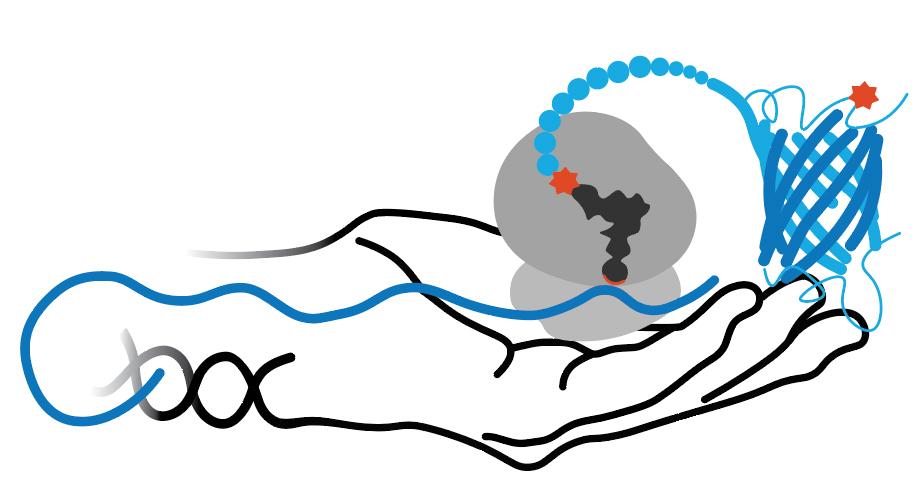GCE Publications
Displaying 1326 - 1350 of 1406 results
| Links to Article | Year | Article Title | Author(s) |
|---|---|---|---|
| 2001 | Molecular systematics and evolutionary history of kalats (genus Sheppardia): a pre-Pleistocene radiation in a group of African forest birds. | M Roy, R Sponer, J Fjeldså | |
| 2001 | A role for selection in regulating the evolutionary emergence of disease-causing and other coding CAG repeats in humans and mice. | J Hancock, E Worthey, M Santibáñez-Koref | |
| 2001 | Expanding the genetic code of Escherichia coli. | L Wang, A Brock, B Herberich, P Schultz | |
| 2001 | Efforts toward expansion of the genetic alphabet: replication of DNA with three base pairs. | E Tae, Y Wu, G Xia, P Schultz, F Romesberg | |
| 2001 | Structure and dissemination of a chromosomal insertion element encoding macrolide efflux in Streptococcus pneumoniae. | K Gay, D Stephens | |
| 2001 | Rent1, a trans-effector of nonsense-mediated mRNA decay, is essential for mammalian embryonic viability. | S Medghalchi, P Frischmeyer, J Mendell, A Kelly, A Lawler, H Dietz | |
| 2001 | Identification of novel breast tumor-specific mutation(s) in the q11.2 region of chromosome 17 by RAPD/AP-PCR fingerprinting. | K Singh, D Roy | |
| 2000 | Quadruplet codons: implications for code expansion and the specification of translation step size. | B Moore, B Persson, C Nelson, R Gesteland, J Atkins | |
| 2000 | Synthesis of 6-(2-thienyl)purine nucleoside derivatives toward the expansion of the genetic code. | T Fujiwara, H Sugiyama, I Hirao, S Yokoyama | |
| 1999 | Selection, history and chemistry: the three faces of the genetic code. | R Knight, S Freeland, L Landweber | |
| 1999 | Protein evolution drives the evolution of the genetic code and vice versa. | M Jiménez-Montaño | |
| 1999 | Definition of the smallest pathological CAG expansion in SCA7. | A Nardacchione, L Orsi, A Brusco, A Franco, E Grosso, E Dragone, P Mortara, D Schiffer, M De Marchi | |
| 1999 | Molecular defects of the androgen receptor. | M McPhaul | |
| 1997 | Sequence fossils, triplet expansion, and reconstruction of earliest codons. | E Trifonov, T Bettecken | |
| 1997 | Codon-usage variants in the polymorphic (GGN)n trinucleotide repeat of the human androgen receptor gene. | R Lumbroso, L Beitel, D Vasiliou, M Trifiro, L Pinsky | |
| 1996 | A cis-acting element in the BCL-2 gene controls expression through translational mechanisms. | M Harigai, T Miyashita, M Hanada, J Reed | |
| 1994 | Structure and expression of the gene responsible for the triplet repeat disorder, dentatorubral and pallidoluysian atrophy (DRPLA). | S Nagafuchi, H Yanagisawa, E Ohsaki, T Shirayama, K Tadokoro, T Inoue, M Yamada | |
| 1994 | Molecular genetic studies of Creutzfeldt-Jakob disease. | L Goldfarb, P Brown, L Cervenakova, D Gajdusek | |
| 1992 | Ribosome-mediated incorporation of a non-standard amino acid into a peptide through expansion of the genetic code. | J Bain, C Switzer, A Chamberlin, S Benner | |
| 1991 | Selenocysteine: the 21st amino acid. | A Böck, K Forchhammer, J Heider, W Leinfelder, G Sawers, B Veprek, F Zinoni | |
| 1991 | Selenoprotein synthesis: an expansion of the genetic code. | A Böck, K Forchhammer, J Heider, C Baron | |
| 1990 | Bcl-2 is an inner mitochondrial membrane protein that blocks programmed cell death. | D Hockenbery, G Nuñez, C Milliman, R Schreiber, S Korsmeyer | |
| 1988 | Evolution of the genetic code. | J Wong | |
| 1985 | Complementarity between ferritin H mRNA and 28 S ribosomal RNA. | S Jain, J Crampton, I Gonzalez, R Schmickel, J Drysdale | |
| 1984 | Evolution of anticodons. | T Jukes |
